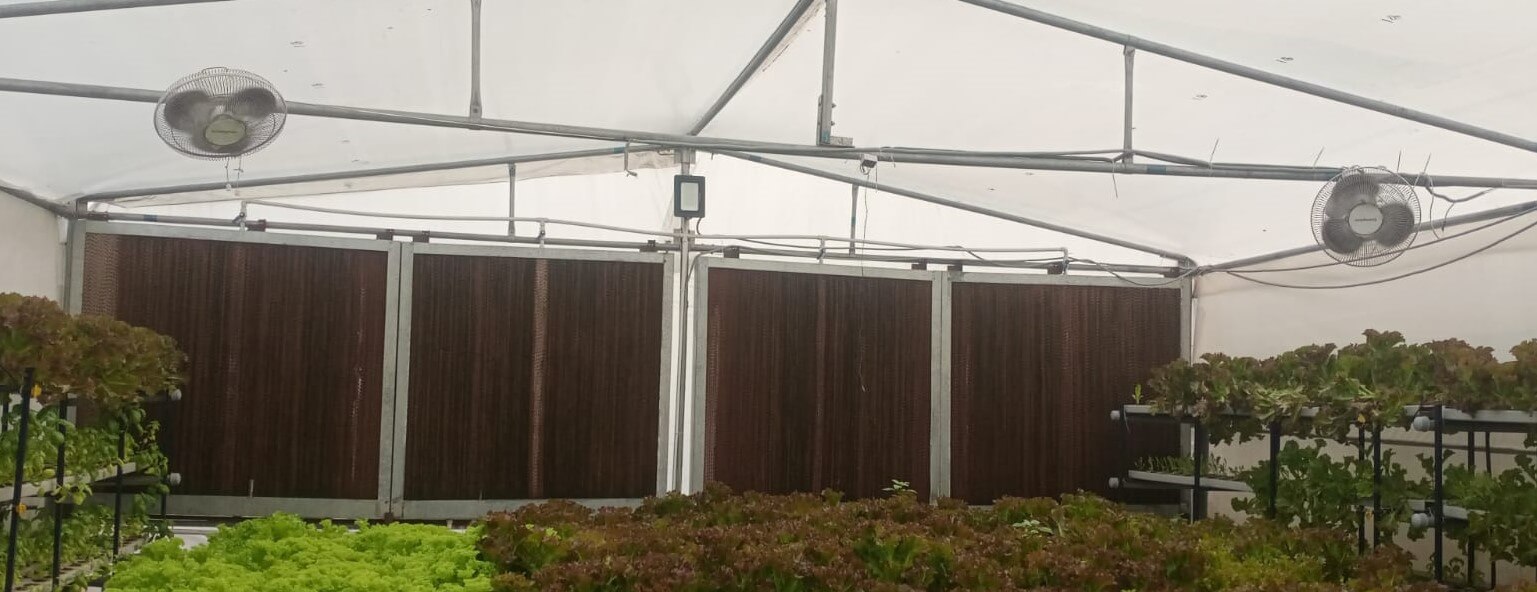A polyhouse is made to provide a suitable environment to grow plants. Polyhouse also provides shelter to plants from strong winds, rain, cold, and other weather conditions. Temperature control is one of the major challenges in polyhouse. The ideal temperature for plant growth in polyhouses ranges from 12 to 24 degrees Celsius.

Natural ventilation
Some polyhouses have hinged roofs that can open in high temperatures to prevent the accumulation of hot air and allow it to escape. Growers also ventilate their polyhouse by rolling up the plastic sheets to vent hot air and provide air circulation inside the polyhouse.
Ventillation using a fan
Ventilation using fans pushes the hot air out and draws the cool air into the polyhouse. The location of these fans also plays a significant role. Locating it 6-7 feet high provides better air circulation in the polyhouse.
Fans with wet pads provide evaporative cooling, keeping the moisture in the environment and preventing excessive drying of plant material.
Shading
In summer, plants get damaged because of the high intensity of light. Shading reduces the intensity of sunlight and also reduces the temperature inside the polyhouse. Generally, agro-shade nets are used to cover the polyhouse and prevent it from high-intensity sunlight. These nets can be operated manually or by automated devices.
Watering
Watering is a method to cool off the temperature of a polyhouse by manually spraying it with water during high temperatures. Water quality should also be checked before application. Water should have an electrical conductivity of around 0.5-1.5 dS/m and a pH of around 6-7. Generally, foggers and misting systems are used, depending upon the crop, to lower the temperature by removing the heat with a fine spray of water.



